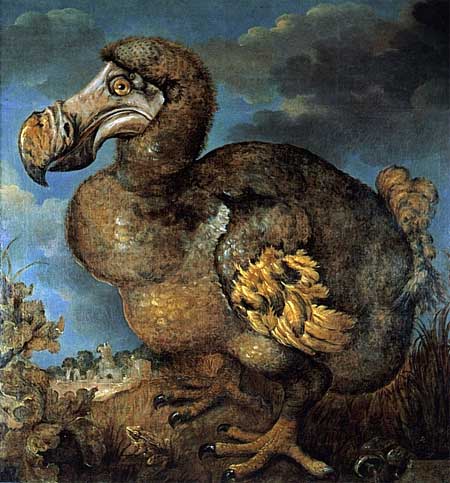The Oxford University Museum of Natural History was founded in 1860 and features several significant exhibits including the Oxford Dodo and quite a few important fossils and dinosaur skeletons.
Several historic events have taken place at the museum including the 1860 great debate over evolution and the first public demonstration of the telegraph in 1894.
Visitors to the adjacent Pitt Rivers Museum need to enter that museum through the ground floor of this one.
What to see at the Oxford University Museum of Natural History
The museum’s central court is a great place to start exploring and it features a skeleton parade that includes Iguanodon and Tyrannosaurus Rex skeletons as well as the Oxford Dodo.
The Oxford Dodo is one of the museum’s highlights. Although it only consists of a head and foot of a dodo, it is the most complete remains anywhere of a single dodo.
The dodo exhibit also features a painting of a dodo made in 1651 by Flemish artist Jan Savery. It is believed that Lewis Carroll was inspired by this painting to include the dodo character in Alice’s Adventures in Wonderland.

The zoology exhibits include a whale skeleton plus the usual collection of stuffed animals. The Deep Tree interactive display is particularly interesting, showing how all living things are connected.
The rocks and minerals displays include touchable exhibits including the 4.5-billion-year-old Nantan meteorite.
The museum’s palaeontology collection has fossils from around the world including marine fossils from Oxfordshire plus several dinosaurs.
This gallery features the Trilobite wall, a slab of sandstone from Morocco that is studded with fossilised trilobites dating between 485 and 444 million years ago.
The Megalosaurus bucklandii, the first dinosaur to be scientifically described, was discovered in Oxfordshire and the fossilised remains of this and three other Oxfordshire dinosaurs are also on display in the museum. These dinosaurs date from the Middle-Late Jurassic Period (around 170–150 million years ago).
The Out of the Deep exhibit consists of two plesiosaur skeletons dating from the Jurassic Period (around 165 million years ago). This exhibit also has displays of other extinct reptiles and also has information about the excavation process of these fossils.
The museum’s palaeontology exhibits also include Mary Anning’s Ichthyosaur. This 195-million-year-old fossil of a Jurassic-era marine reptile is noted for being so well-preserved that its stomach contents have been preserved.
The History of Life on Earth gallery shows how current life on earth evolved from the earliest microscopic organisms. This theme is expanded upon in the Sensing Evolution display, which includes 20 touchable specimens.
Another of the museum’s highlights is the Red Lady of Paviland, a partial skeleton discovered in South Wales in 1823. The Red Lady, which is actually a young man, is around 33,000–34,000 years old and is one of the oldest ceremonial burials in Western Europe and is the oldest remains of a human burial ever found in the United Kingdom.
The museum also has a collection of Victorian sculpture including many works created by Pre-Raphaelite artists.
Visiting the Oxford University Museum of Natural History
The Oxford University Museum of Natural History is around a 10-minute walk north of the city centre.
Admission to the museum is free of charge.
There is a free audio guide online that you can stream using your phone and the museum’s free Wi-Fi connection. The audio guide is available in nine languages: Arabic, Chinese, English, French, German, Italian, Polish, Portuguese and Spanish.
The museum is wheelchair-accessible and visitors with wheelchairs should use the disabled entrance to the right-hand-side of the museum’s main entrance.
The museum has a cafe with freshly-prepared cakes and sandwiches.
Most visitors spend between one and two hours exploring the museum, although you should allow twice as much time so you can also visit the adjoining Pitt Rivers Museum.


There are no comments yet.